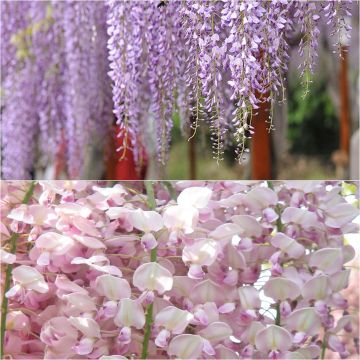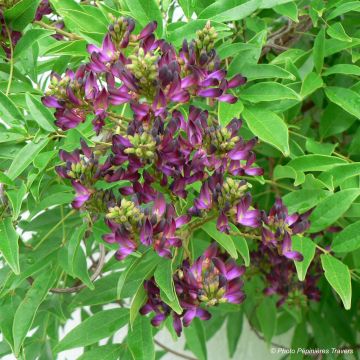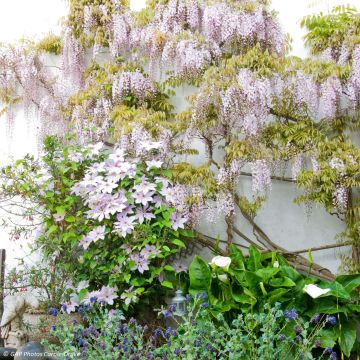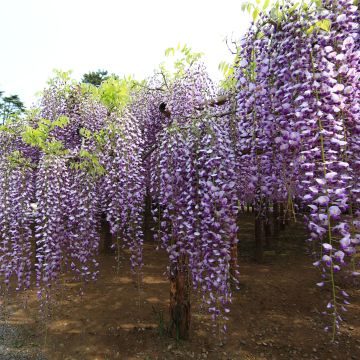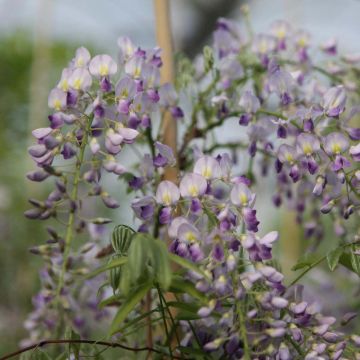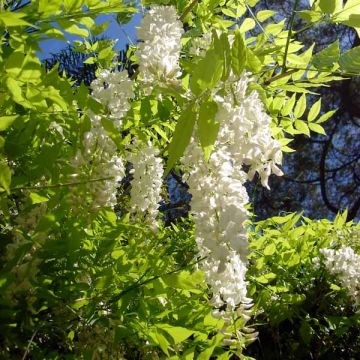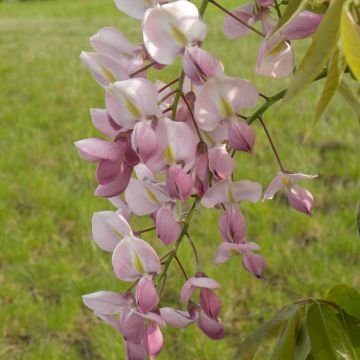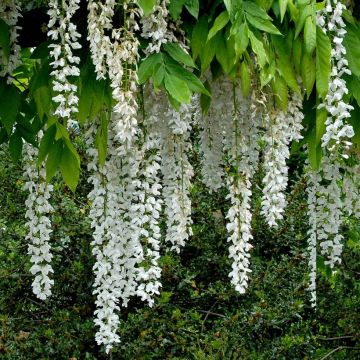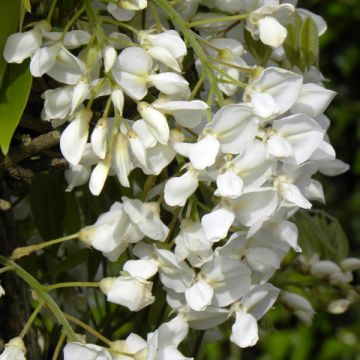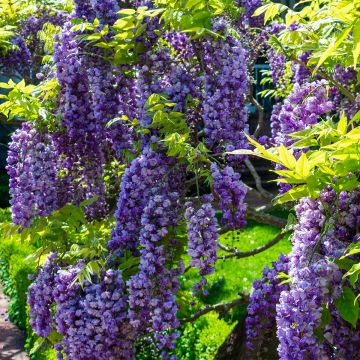

Wisteria frutescens
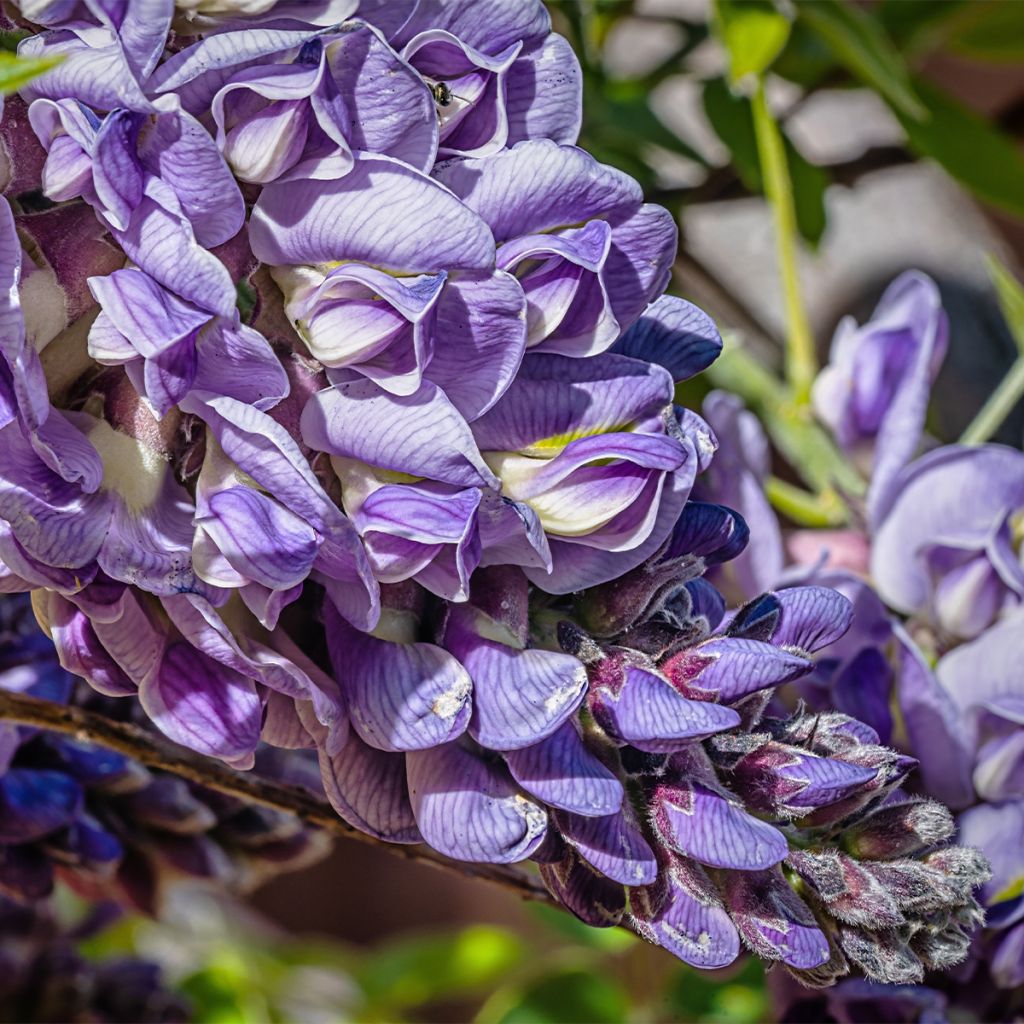

Wisteria frutescens
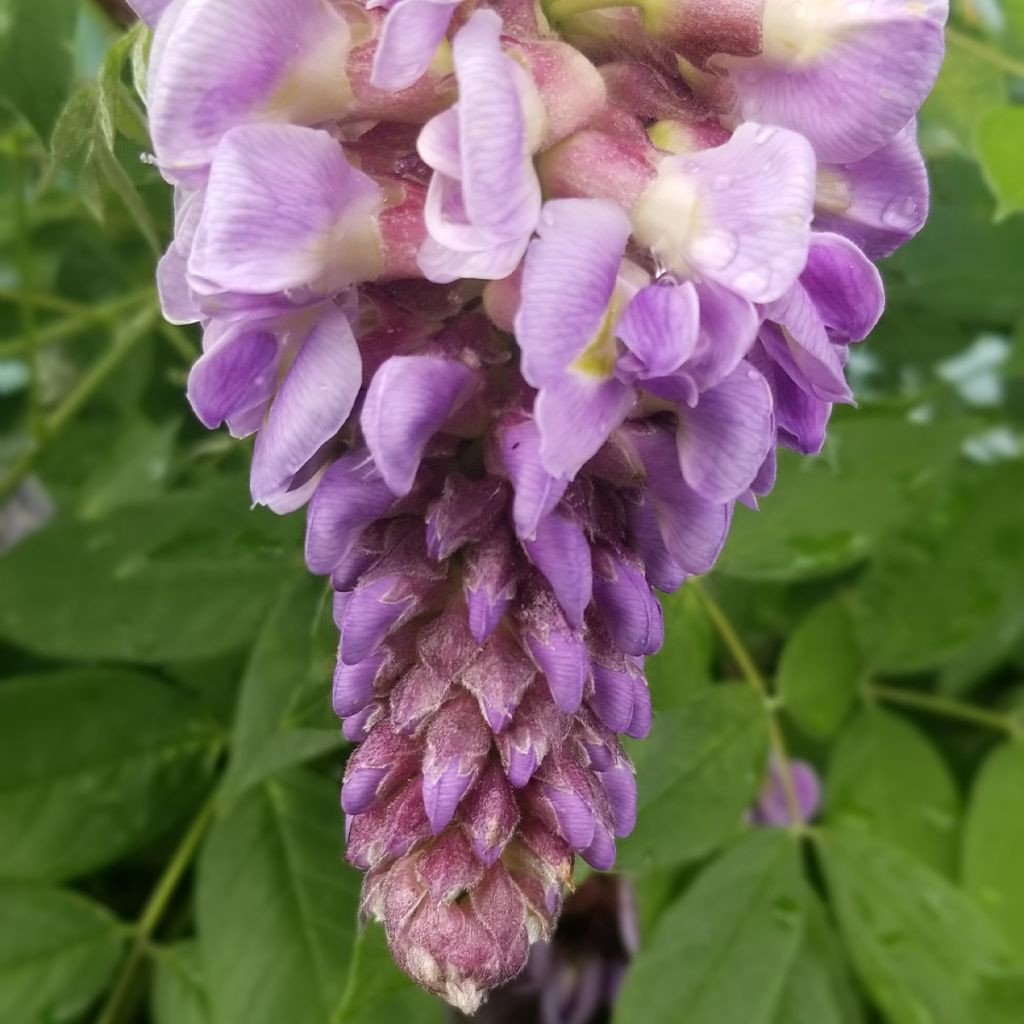

Wisteria frutescens
Wisteria frutescens
Wisteria frutescens
American Wisteria
The plant arrived without a label, I had ordered an American wisteria, There are no more leaves, I hope it will recover and that it is indeed the plant I ordered.
Marie, 02/10/2025
Special offer!
Receive a €20 voucher for any order over €90 (excluding delivery costs, credit notes, and plastic-free options)!
1- Add your favorite plants to your cart.
2- Once you have reached €90, confirm your order (you can even choose the delivery date!).
3- As soon as your order is shipped, you will receive an email containing your voucher code, valid for 3 months (90 days).
Your voucher is unique and can only be used once, for any order with a minimum value of €20, excluding delivery costs.
Can be combined with other current offers, non-divisible and non-refundable.
Why not try an alternative variety in stock?
View all →This plant carries a 6 months recovery warranty
More information
We guarantee the quality of our plants for a full growing cycle, and will replace at our expense any plant that fails to recover under normal climatic and planting conditions.

Would this plant suit my garden?
Set up your Plantfit profile →
Description
Wisteria frutescens, also known as the American or Texas wisteria, is a species slightly less vigorous than its Chinese and Japanese cousins, easier to contain, and better suited to smaller gardens. Flowering a little later in the season, in clusters of purple flowers that are quite short. The spring flowering is abundant, while the late summer re-flowering is more modest. The flowers of this American wisteria are nectar-rich and slightly fragrant. Wisterias quickly and gracefully wrap their long twining stems around trellises, fences, pergolas, and arbours.
Wisteria frutescens is a woody climbing plant belonging to the large family of Fabaceae, just like clover, alfalfa, and lupins. It is native to the moist forests and banks of watercourses in the southeastern United States, from Virginia to Texas, from Florida in the south to New York in the north. Its long stems, limited to a size of half the Chinese Wisteria (about 5-6m (16-20ft)), lignify with age. It is a plant perfectly resistant to cold, not very demanding in terms of soil (although it dislikes excessive active limestone), and is capable of growing in periodically flooded or, conversely, dry soils in summer if they are deep.
The stems of this American wisteria turn counterclockwise around supports. The growth of new shoots is very rapid, around 1 to 2 metres (3 to 7 feet) in the span of one season in moist soil. The main flowering occurs in May-June, just after that of the Asian wisterias, more or less early depending on the climate, on fairly young plants. It develops on almost naked branches located not far from the lignified main stems. The compact flower clusters are about 15-18cm (6-7in) long, where small mauve butterfly-like flowers are tightly packed, spreading a light fragrance in calm weather. They open from the base towards the tip of the cluster. The plant often re-flowers in late summer or autumn if pruned well. The young bronze leaves appear just before flowering and then turn a light green colour. They are 15 to 30cm (6 to 12in) long and divided into 9 to 15 rounded leaflets, giving the foliage a light appearance. The deciduous foliage turns golden yellow in autumn before falling. Very long-lasting, the Texas wisteria can live for more than 50 years.
The wisteria is the epitome of romantic plants. But this queen in the kingdom of climbers will only grow for a few linear metres to showcase its splendour. Less imposing than its cousins, it is still capable of enhancing a facade or any small structure, no matter how modest. This lively plant often outlives the person who planted it. Its Japanese-like silhouette will cover a wall or an unsightly fence. It wraps around a fence or trellis without restraint if allowed to do so and tends to smother nearby plants. It prefers a solitary location, in full sun or partial shade in warm climates. Or associate it with honeysuckles, passionflowers, and clematis. Wisteria frutescens is a variety highly appreciated by bonsai enthusiasts. It easily grows as a small tree, transforming in spring into a fountain of purple clusters.
Report an error about the product description
Wisteria frutescens in pictures
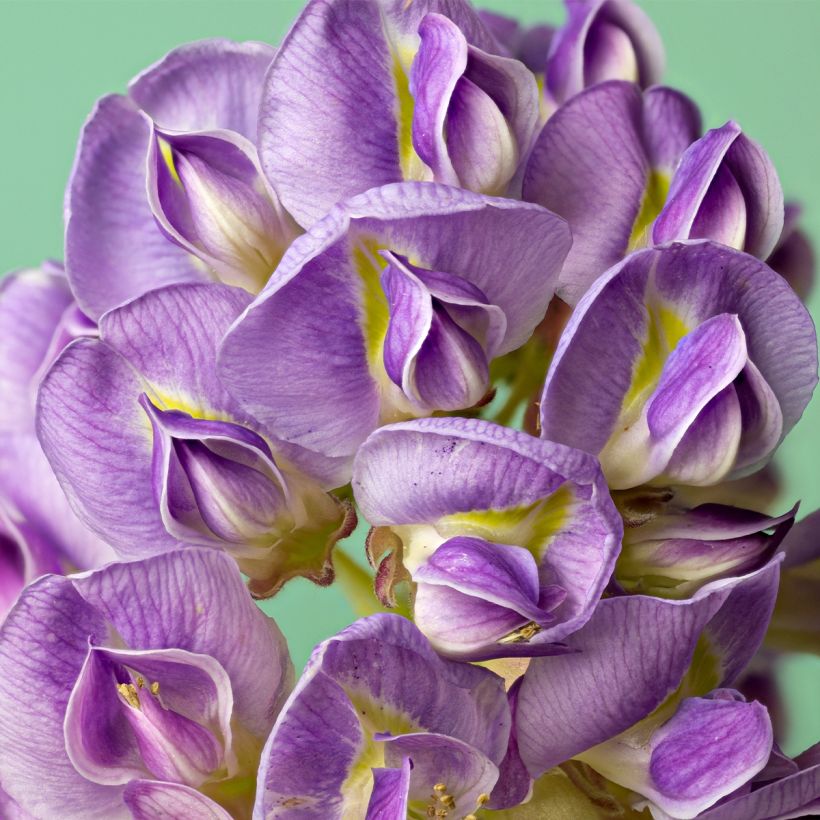

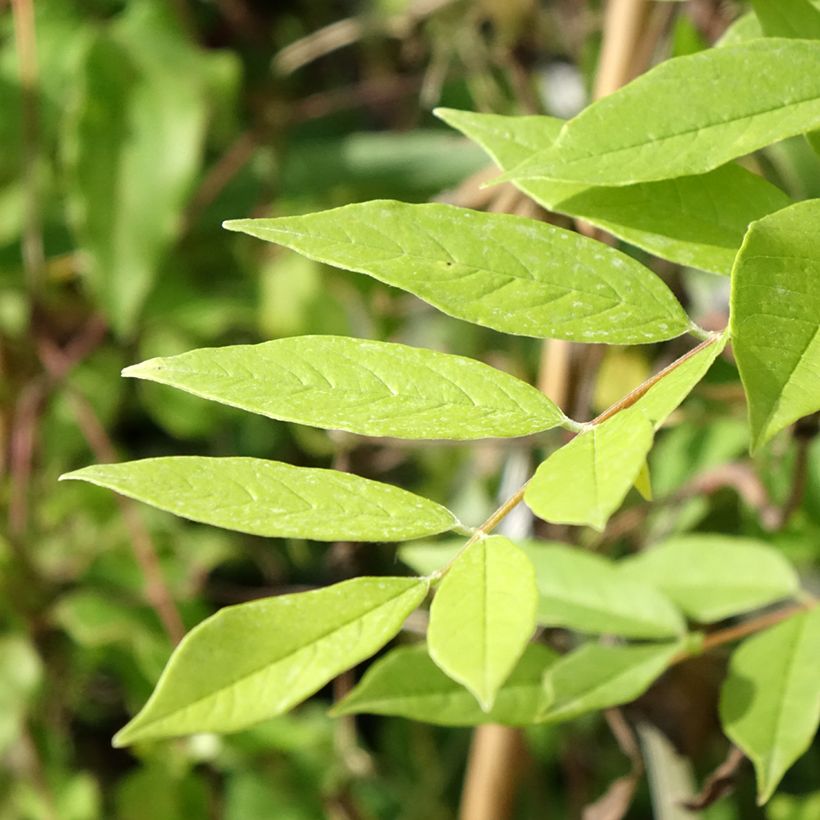

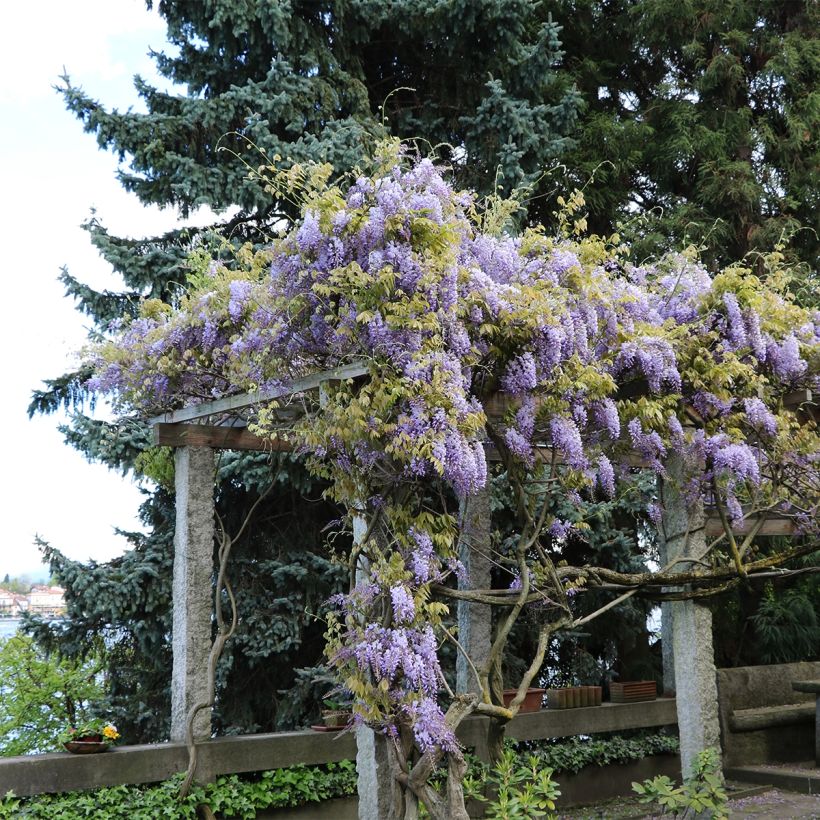

Plant habit
Flowering
Foliage
Botanical data
Wisteria
frutescens
Fabaceae
American Wisteria
Cultivar or hybrid
Other Wisterias
View all →Planting and care
American Wisteria is an easy-to-grow plant in all our regions, as long as the soil it is planted in is sufficiently deep and preferably not chalky. It can grow in any garden soil, with a preference for loamy soils. It prefers an acidic to neutral soil and may wither in a chalky soil. Once established, it can withstand summer drought and requires no watering. Plant it along a wall or train it on a pergola. Pruning is recommended to encourage better flowering, and even multiple flowering in a season. To improve the hardiness of Wisteria frutescens, which is already quite good, plant it in a well-draining soil, trained on a south-facing wall, and it will withstand very harsh winters more easily. Wisterias can be trained into tree form by growing them on a "parasol" stake 1.5 to 2m (5 to 7ft) high, or used as ground cover.
Planting period
Intended location
Care
-
, onOrder confirmed
Reply from on Promesse de fleurs
Haven't found what you were looking for?
Hardiness is the lowest winter temperature a plant can endure without suffering serious damage or even dying. However, hardiness is affected by location (a sheltered area, such as a patio), protection (winter cover) and soil type (hardiness is improved by well-drained soil).

Photo Sharing Terms & Conditions
In order to encourage gardeners to interact and share their experiences, Promesse de fleurs offers various media enabling content to be uploaded onto its Site - in particular via the ‘Photo sharing’ module.
The User agrees to refrain from:
- Posting any content that is illegal, prejudicial, insulting, racist, inciteful to hatred, revisionist, contrary to public decency, that infringes on privacy or on the privacy rights of third parties, in particular the publicity rights of persons and goods, intellectual property rights, or the right to privacy.
- Submitting content on behalf of a third party;
- Impersonate the identity of a third party and/or publish any personal information about a third party;
In general, the User undertakes to refrain from any unethical behaviour.
All Content (in particular text, comments, files, images, photos, videos, creative works, etc.), which may be subject to property or intellectual property rights, image or other private rights, shall remain the property of the User, subject to the limited rights granted by the terms of the licence granted by Promesse de fleurs as stated below. Users are at liberty to publish or not to publish such Content on the Site, notably via the ‘Photo Sharing’ facility, and accept that this Content shall be made public and freely accessible, notably on the Internet.
Users further acknowledge, undertake to have ,and guarantee that they hold all necessary rights and permissions to publish such material on the Site, in particular with regard to the legislation in force pertaining to any privacy, property, intellectual property, image, or contractual rights, or rights of any other nature. By publishing such Content on the Site, Users acknowledge accepting full liability as publishers of the Content within the meaning of the law, and grant Promesse de fleurs, free of charge, an inclusive, worldwide licence for the said Content for the entire duration of its publication, including all reproduction, representation, up/downloading, displaying, performing, transmission, and storage rights.
Users also grant permission for their name to be linked to the Content and accept that this link may not always be made available.
By engaging in posting material, Users consent to their Content becoming automatically accessible on the Internet, in particular on other sites and/or blogs and/or web pages of the Promesse de fleurs site, including in particular social pages and the Promesse de fleurs catalogue.
Users may secure the removal of entrusted content free of charge by issuing a simple request via our contact form.
The flowering period indicated on our website applies to countries and regions located in USDA zone 8 (France, the United Kingdom, Ireland, the Netherlands, etc.)
It will vary according to where you live:
- In zones 9 to 10 (Italy, Spain, Greece, etc.), flowering will occur about 2 to 4 weeks earlier.
- In zones 6 to 7 (Germany, Poland, Slovenia, and lower mountainous regions), flowering will be delayed by 2 to 3 weeks.
- In zone 5 (Central Europe, Scandinavia), blooming will be delayed by 3 to 5 weeks.
In temperate climates, pruning of spring-flowering shrubs (forsythia, spireas, etc.) should be done just after flowering.
Pruning of summer-flowering shrubs (Indian Lilac, Perovskia, etc.) can be done in winter or spring.
In cold regions as well as with frost-sensitive plants, avoid pruning too early when severe frosts may still occur.
The planting period indicated on our website applies to countries and regions located in USDA zone 8 (France, United Kingdom, Ireland, Netherlands).
It will vary according to where you live:
- In Mediterranean zones (Marseille, Madrid, Milan, etc.), autumn and winter are the best planting periods.
- In continental zones (Strasbourg, Munich, Vienna, etc.), delay planting by 2 to 3 weeks in spring and bring it forward by 2 to 4 weeks in autumn.
- In mountainous regions (the Alps, Pyrenees, Carpathians, etc.), it is best to plant in late spring (May-June) or late summer (August-September).
The harvesting period indicated on our website applies to countries and regions in USDA zone 8 (France, England, Ireland, the Netherlands).
In colder areas (Scandinavia, Poland, Austria...) fruit and vegetable harvests are likely to be delayed by 3-4 weeks.
In warmer areas (Italy, Spain, Greece, etc.), harvesting will probably take place earlier, depending on weather conditions.
The sowing periods indicated on our website apply to countries and regions within USDA Zone 8 (France, UK, Ireland, Netherlands).
In colder areas (Scandinavia, Poland, Austria...), delay any outdoor sowing by 3-4 weeks, or sow under glass.
In warmer climes (Italy, Spain, Greece, etc.), bring outdoor sowing forward by a few weeks.
































